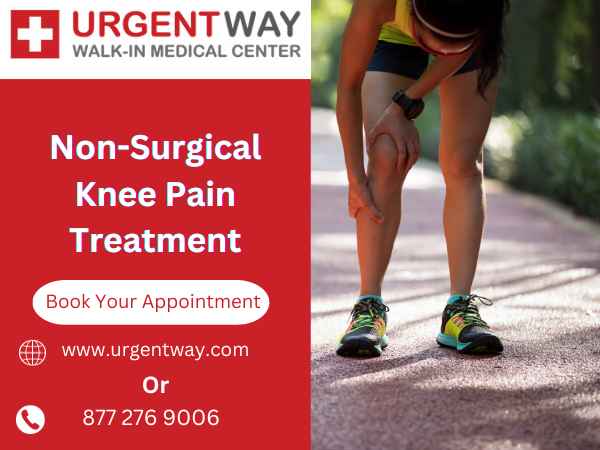Knee pain is a common and often debilitating condition that affects millions of people worldwide. Whether it's the result of an injury, arthritis, or other underlying medical issues, knee pain can significantly hinder one's quality of life. While surgery is sometimes necessary, non-surgical knee pain treatments and pain management physicians play a crucial role in helping individuals find relief and restore their mobility. In this in-depth guide, we will explore various non-surgical options for knee pain treatment, with a focus on the pivotal role of pain management physicians in addressing this prevalent issue.
The Role of a Pain Management Physician
A pain management physician is a specialized medical practitioner skilled in the diagnosis, treatment, and management of various types of pain, including knee pain. These specialists play a pivotal role in helping individuals suffering from knee pain find relief and improve their overall quality of life. Here are some of the ways in which pain management physicians contribute to the treatment of knee pain:
- Accurate Diagnosis: Pain management physicians excel at identifying the root causes of knee pain. They use a combination of medical history, physical examinations, and diagnostic tests such as X-rays and MRIs to pinpoint the pain's source.
- Customized Treatment Plans: Once the cause of knee pain is determined, pain management physicians craft personalized treatment plans tailored to each patient's unique needs. These plans may include a combination of non-surgical interventions to alleviate pain and enhance functionality.
- Medication Management: Pain management physicians can prescribe medications to help alleviate pain and reduce inflammation in the knee joint. These medications may include non-steroidal anti-inflammatory drugs (NSAIDs), corticosteroids, or other pain-relief medications.
- Physical Therapy: Physical therapy is a critical component of non-surgical knee pain treatment. Pain management physicians work closely with physical therapists to design rehabilitation plans that help patients regain strength, flexibility, and mobility in the knee joint.
- Injections: In some cases, pain management physicians may recommend injections to provide relief from knee pain. Common injections for knee pain include corticosteroids, hyaluronic acid, and platelet-rich plasma (PRP) injections.
- Regenerative Medicine: Emerging treatments such as PRP and stem cell therapy are being used to promote tissue healing and repair in the knee joint, offering hope for patients seeking non-surgical solutions.
- Lifestyle Modifications: Pain management physicians frequently provide guidance on lifestyle changes that can help manage knee pain. This may include weight management, dietary adjustments, and ergonomic advice.
The Importance of Physical Therapy
Physical therapy is a cornerstone of non-surgical knee pain treatment and deserves special attention. It not only helps manage pain but also plays a critical role in improving knee function and preventing future issues. A skilled physical therapist will develop a customized exercise program that focuses on:
- Strengthening the muscles around the knee, including the quadriceps and hamstrings.
- Improving flexibility and range of motion.
- Enhancing balance and coordination.
- Reducing stress on the knee joint by promoting proper body mechanics.
Physical therapy is not a one-size-fits-all approach; it's tailored to each patient's unique needs and condition. Over time, it can help individuals regain the ability to perform everyday activities without pain.
Lifestyle Considerations
In addition to medical treatments and therapies, lifestyle modifications can significantly impact knee pain management. Here are some important lifestyle considerations for individuals with knee pain:
- Maintain a Healthy Weight: Carrying excess weight puts additional stress on the knee joint. Weight management through diet and exercise can reduce this stress and alleviate knee pain, especially for those with osteoarthritis.
- Stay Active: While high-impact activities may need to be avoided, maintaining regular low-impact exercise can help keep the knee joint mobile and strong. Activities like swimming and cycling are gentle on the knees.
- Ergonomics: Pay attention to your daily ergonomics, whether at work or during recreational activities. Proper posture and body mechanics can help prevent knee pain.
- Footwear: Wearing supportive and comfortable footwear can reduce stress on the knee joint and improve overall mobility.
- Diet: Incorporating anti-inflammatory foods into your diet can help reduce knee pain. Omega-3 fatty acids, found in foods like salmon and walnuts, have been shown to have anti-inflammatory properties.
Knee pain is a challenging condition to live with, but there are numerous non-surgical treatment options available, under the guidance of a pain management physician. From physical therapy to injections, lifestyle modifications to emerging regenerative therapies, patients have a range of tools at their disposal to alleviate pain and improve knee function. Surgical intervention should be considered as a last resort, with non-surgical options explored first to restore comfort and mobility to the knees. Consult a qualified pain management physician to accurately diagnose and effectively address the underlying causes of knee pain, thereby enhancing your quality of life.